- Asia
- Tourism/bali
- 24 Best Temples In Bali To Visit For A Soulful Experience
24 Best Temples in Bali To Visit For A Soulful Experience
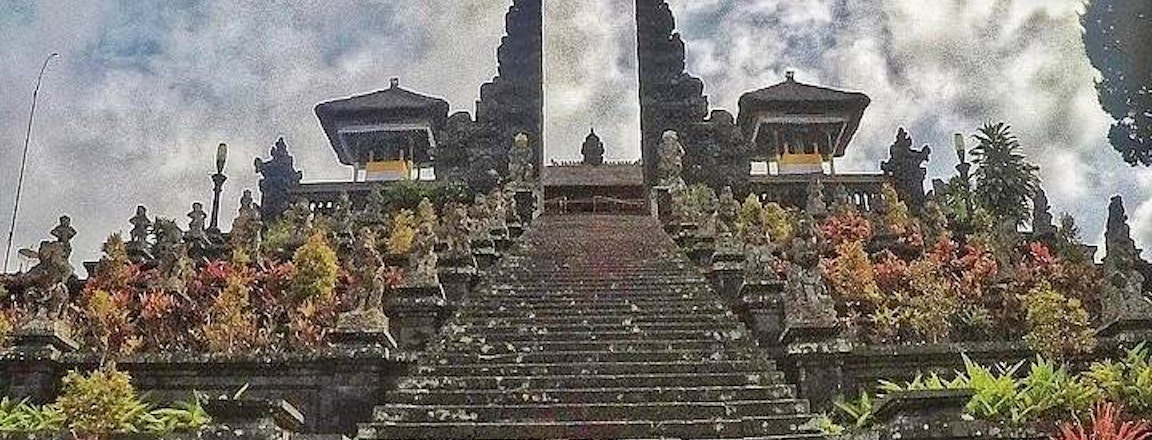
Bali, the mesmerizing "Island of the Gods," is a captivating blend of ancient traditions and vibrant modernity. Its cultural tapestry is woven with threads of spiritual reverence, artistic expression, and a deep connection to nature. Temples, the heart of Balinese culture, stand as testaments to the island's profound spirituality. These sacred sanctuaries are not just places of worship; they are vibrant hubs of community life, where rituals and ceremonies intertwine with the daily rhythm of Balinese existence. From the iconic Tanah Lot, perched atop a rocky islet amidst crashing waves, to the serene Ulun Danu Bratan Temple nestled amidst the tranquil waters of Lake Beratan, Bali's temples offer a glimpse into the island's rich spiritual heritage. Each temple complex is a masterpiece of Balinese architecture and artistry. Ornate carvings, intricate sculptures, and imposing Meru towers adorned with colourful banners create a visually stunning spectacle. The air is perfumed with the fragrant smoke of incense as devotees offer prayers and blessings. Step into the heart of Bali's culture and discover the enchanting beauty of its temples on your Bali tour package from India.
List of Famous Temples in Bali
Embark on a journey of spiritual awakening and cultural immersion, where ancient traditions come alive amidst the vibrant pulse of modern Balinese life. The following section mentions some of the best temples to visit in Bali.
Pura Tanah Lot
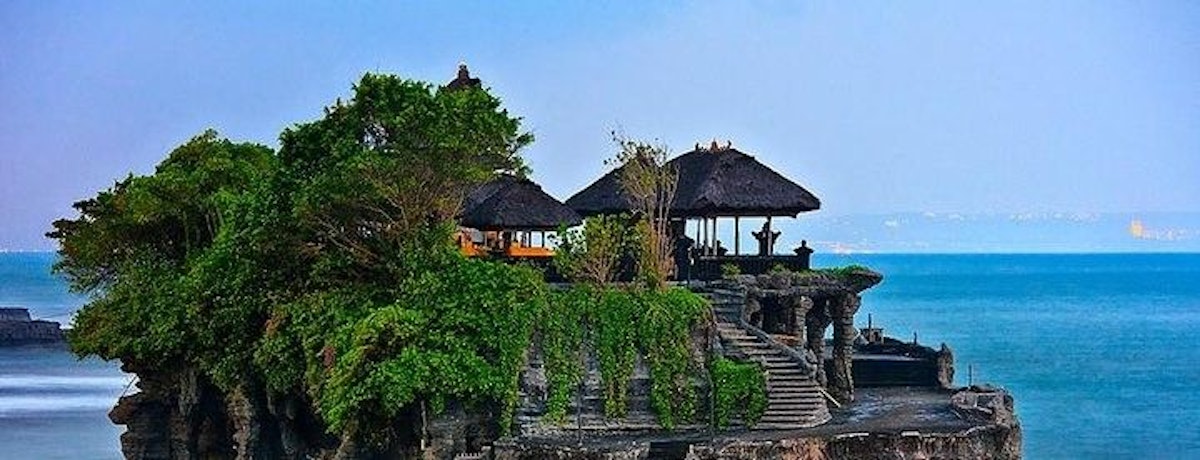
Pura Tanah Lot is a beautiful temple located on a rocky islet off the coast of Bali. It is one of the best temples in Bali and is a popular tourist destination. The temple is dedicated to the Hindu god of the sea, Nirwana Dewata. The temple is built on a rock that is surrounded by waves. This makes it a very picturesque sight, especially at sunset. The temple is also very popular for its Kecak fire dance performances, which are held every night at sunset.
Sanur (2N)
Kuta (3N)
+1 Cities
- Guided Temple Tour: Taman Ayun, Ulundanu, Handara Gate, Banyumala water fall and twin lake
Ulun Danu Beratan Temple
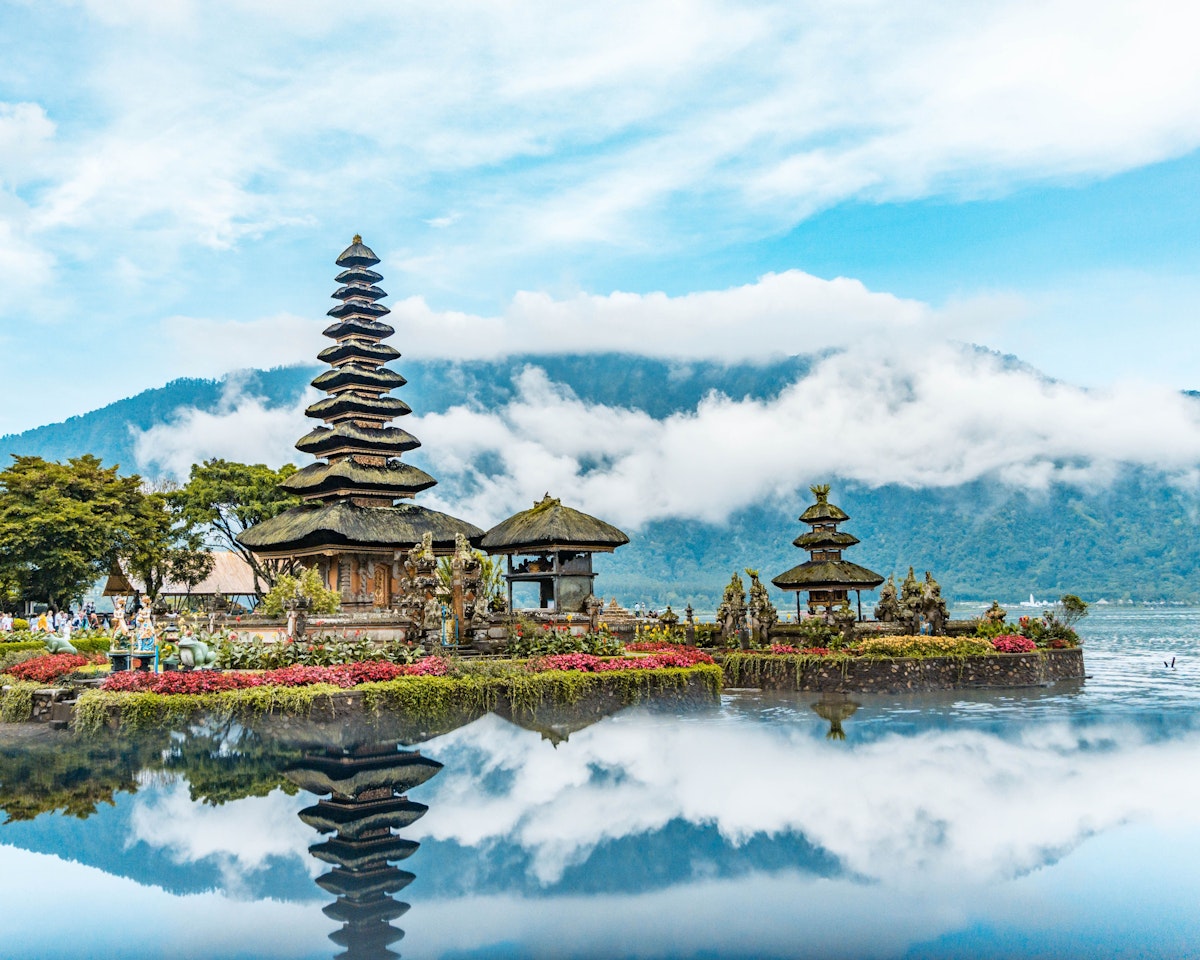
Pura Ulun Danu Bratan is one of the famous temples in Bali located on the shores of Lake Bratan in Bedugul, Bali. The temple is devoted to Dewi Danu, the water deity in Hinduism. The temple complex consists of several temples that are built in a traditional Balinese style with intricate carvings and sculptures. The most iconic temple is the Meru Pagoda, which has 11 tiers and is dedicated to Brahma. Pura Ulun Danu Bratan is a very popular tourist destination.
Kuta (5N)
- South Bali Trail A - South Bali Beaches visit: Any two beaches (Nusa Dua Beach/Pandawa Beach/Padang Padang Beach) + GWK Culture Park + Uluwatu Cliff Temple + Kecak Dance.
Pura Besakih
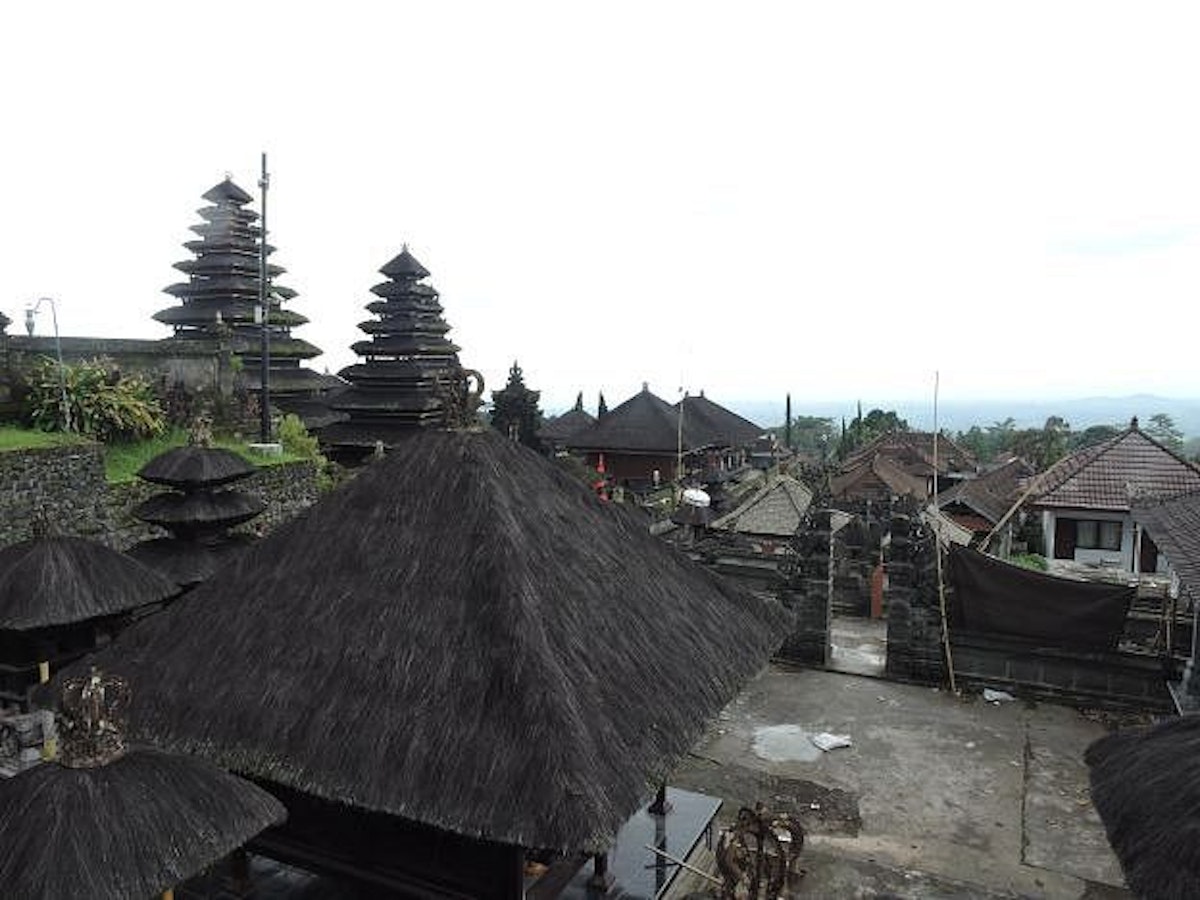
Pura Besakih is the biggest and most significant temples in Bali. Situated atop Mount Agung, the Hindu trinity of Brahma, Vishnu, and Shiva is honoured at this temple. There are twenty-three temples in the complex, arranged on six floors. The temples have elaborate sculptures and carvings in a typical Balinese building style. For Hindus who live in Bali, Pura Besakih is a highly significant place of devotion.
Ubud (2N)
Kuta (3N)
- Kintamani Volcano + Tegallalang Rice Terraces + Ubud monkey forest
Goa Gajah
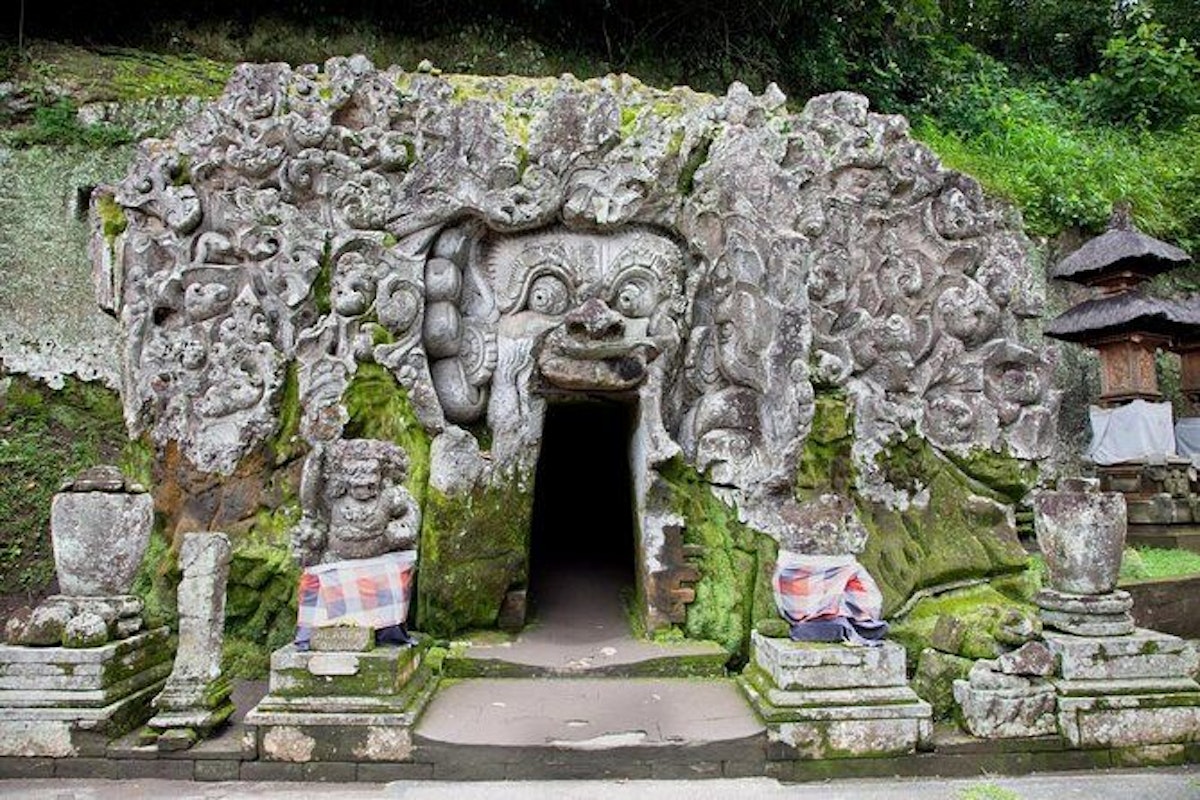
Pura Goa Gajah is a unique and fascinating temple located in Ubud, Bali. The temple is carved into the side of a rocky hill and is dedicated to the Hindu god of fertility, Ganesha. The most unique feature of the temple is the elephant cave, which is a large cave that is carved into the rock face. The cave is adorned with intricate Hindu carvings, including a large statue of Ganesha. Pura Goa Gajah is a popular tourist destination and is a great place to learn about Balinese culture and history.
Kuta (2N)
Seminyak (2N)
- Sunset at Uluwatu temple
Penulisan Temple
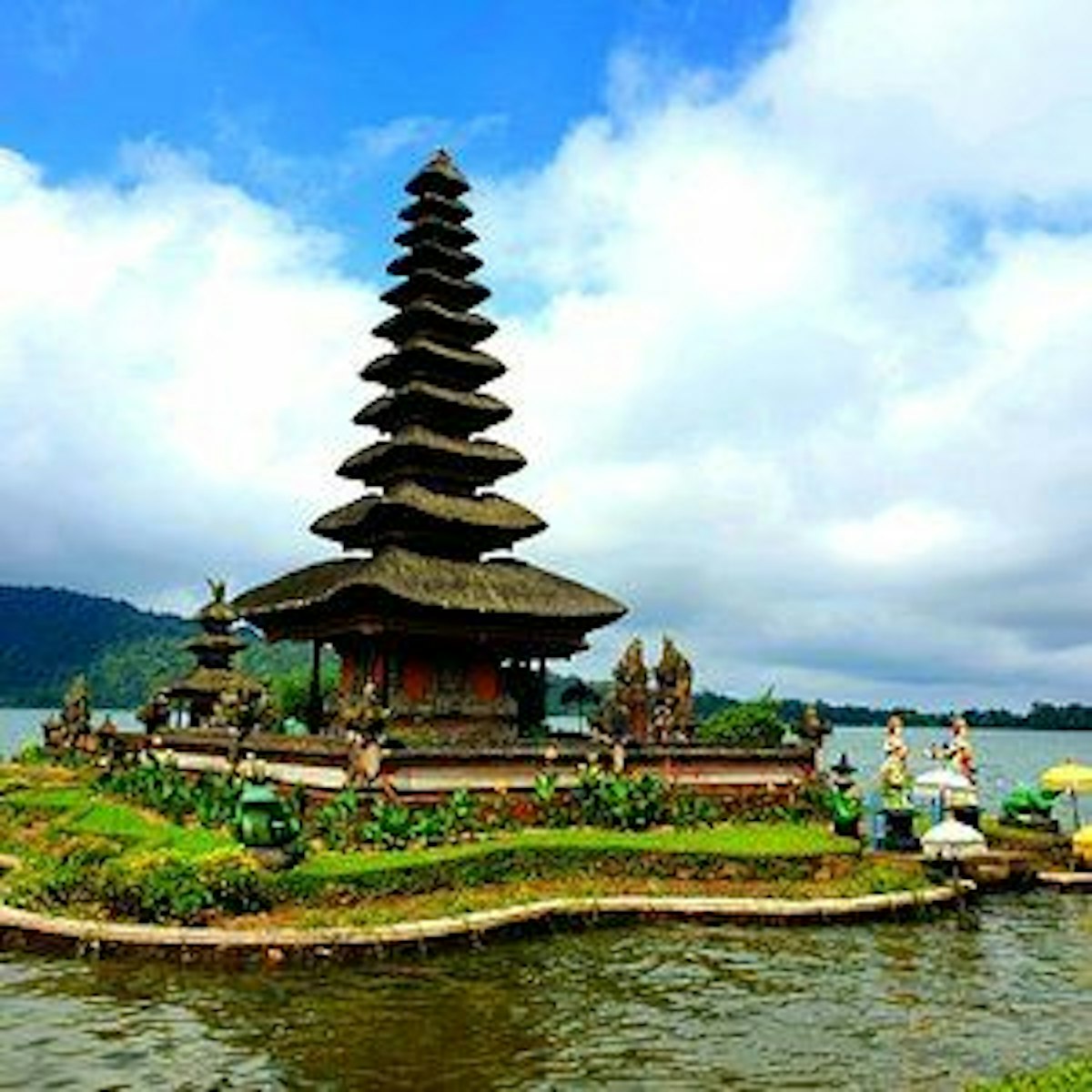
Penulisan Temple, located in the Kintamani highlands, is one of the must-visit temples in Bali that attracts tourists as well as native devotees. Arranged at 1745 meters and around 3 kilometers, this sanctuary is the most elevated one and comprises 11 terraces, of which the first five are the temple complex and were built over the period of the 10th and 12th centuries. Penulisan Temple is believed to be one of the oldest temples in Bali, and it has remained the main worship center for many centuries. The temple, being located on a hilltop away from the bustle, becomes the perfect place to feel serene. Try to visit this place during the dry season (April to September), as there is a potential for flooding during the winter. Penulisan Temple is open to visitors daily from 8:00 a.m. to 5:00 p.m., and no entry ticket is required.
Kuta (2N)
Ubud (3N)
- Kintamani Volcano + Tegallalang Rice Terraces + Ubud monkey forest
Pura Tirta Empul
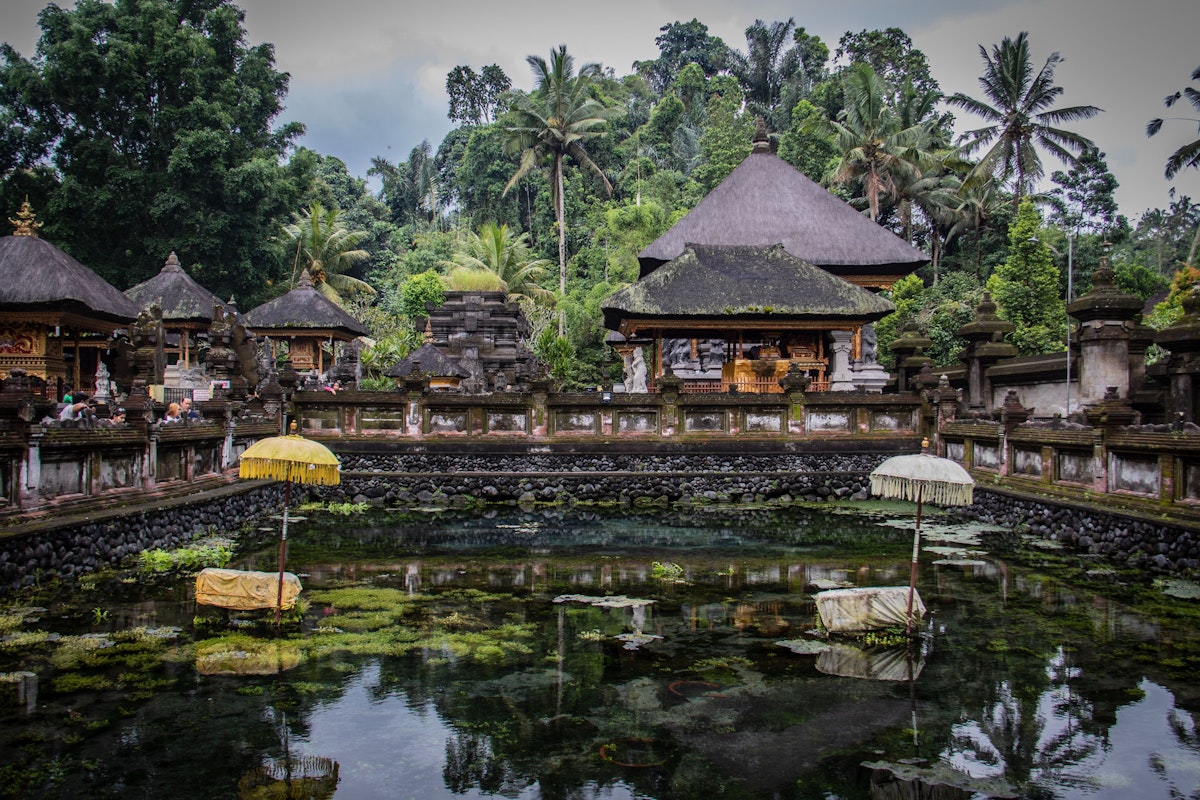
Pura Tirta Empul is one of the beautiful temples in Bali located in Tampaksiring. The Hindu lord of water, Vishnu, is worshipped at this temple. The most famous feature of the temple is the holy springs, which are believed to have healing powers. The springs are located in a series of pools, and visitors are encouraged to bathe in the water. Pura Tirta Empul is a popular tourist destination and a great place to relax and rejuvenate.
Ubud (2N)
Kuta (3N)
- Kintamani Volcano Viewpoint , Tegenungan Water Fall , Coffee Plantation, Tegallalang Rice fields, My Swing with local lunch
Uluwatu Temple
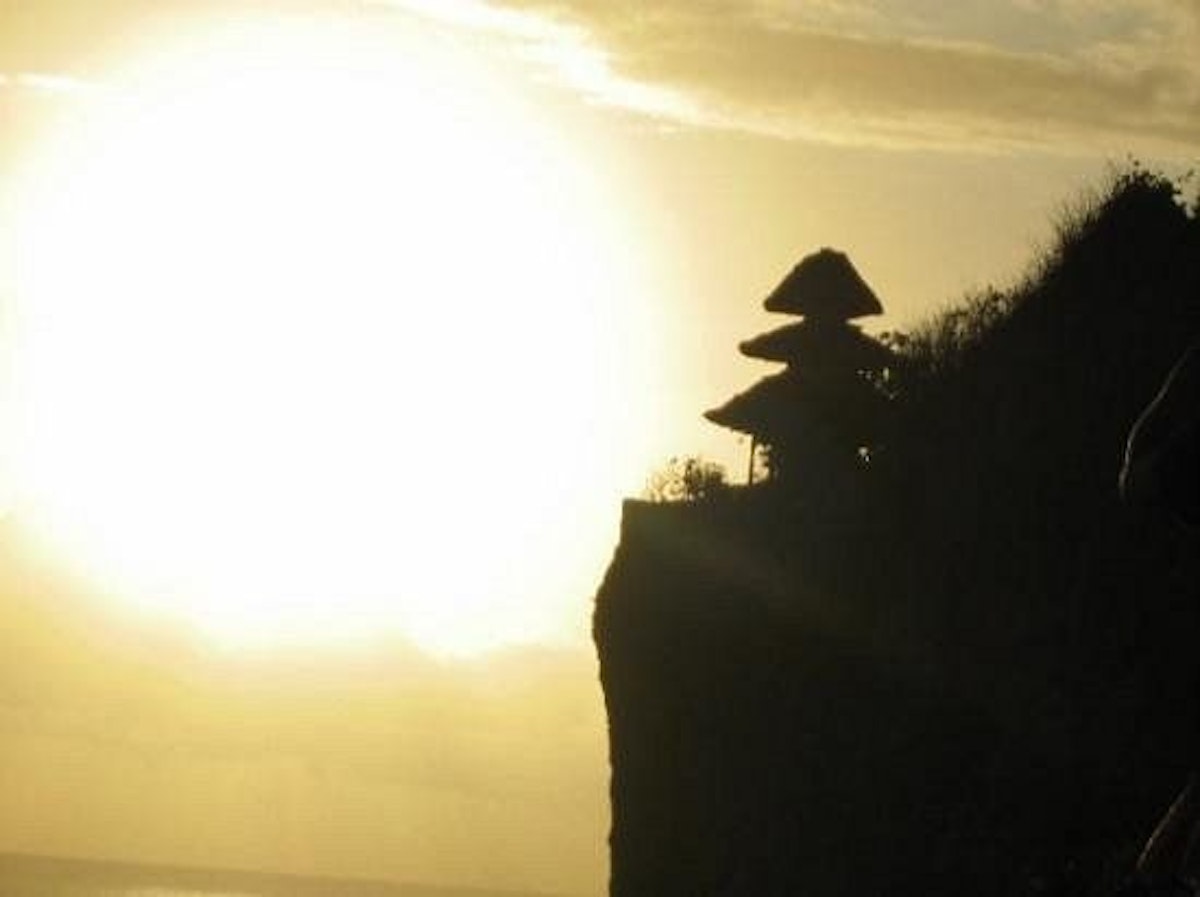
Renowned for its magnificent location, Pura Luhur Uluwatu rests on top of a steep cliff that is roughly 70 meters above sea level. It is one of the six important spiritual pillars and a must-visit temples in Bali. The best time to visit Uluwatu is in the evenings when you can witness spellbinding sunsets and enjoy the daily Kecak traditional dance performances that happen in the nearby amphitheater. Archaeological remains prove that this temple dates back to the 10th century. Hindus believe that this hilltop temple merges the powers of Lord Brahma, Shiva, and Vishnu. The temple will remain open from 9 a.m. to 6 p.m., but try to see the temple before sunset and enjoy the Kecak dance performance, which happens at 6 p.m. every day. There is no public transit available to get to Uluwatu Temple, and getting back into town without a planned shuttle or taxi will be challenging.
Sanur (2N)
Nusa Penida (2N)
+1 Cities
- Sunset at Uluwatu temple
Taman Ayun Temple
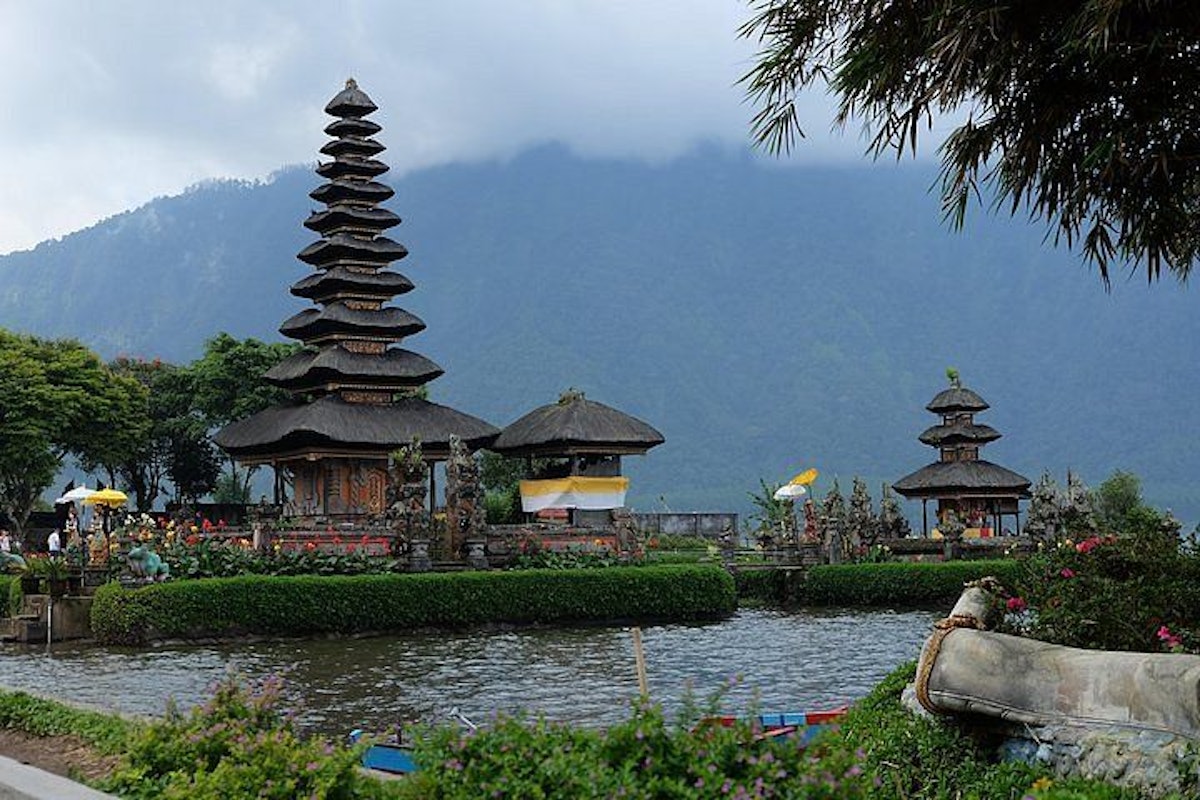
Pura Taman Ayun is a famous temple in Bali located in Menganwi. The temple is dedicated to the Hindu gods of the sky and the sea. The temple complex is surrounded by a moat and is adorned with intricate carvings and sculptures. The most iconic feature of the temple is the Meru Pagoda, which has 13 tiers and is dedicated to Brahma. Pura Taman Ayun is a UNESCO World Heritage Site and is a popular tourist destination.
Kuta (2N)
Seminyak (2N)
+1 Cities
- Water Sports Combo: Banana Boat + Sea Walking
Underwater Temple - Taman Pura
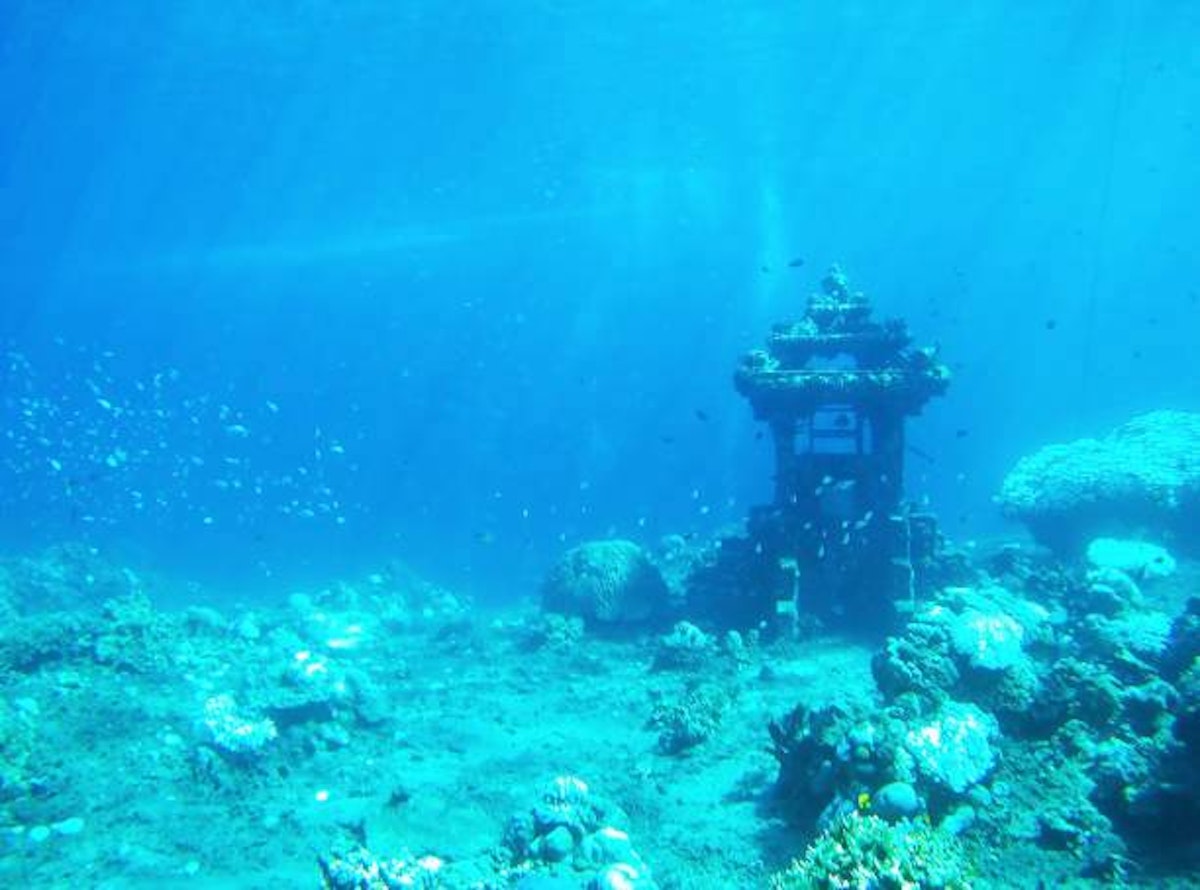
The best temple to visit in Bali and get literally soaked in devotion is this underwater temple. It is named Taman Pura and is a part of the conservation program that began in 2005. As part of the program, statues, and idols are placed at a distance of around 15 meters in the Pemuteran Bio Rock area. Now there are 10 statues and a temple structure in addition to a number of bio-wreck dive sites. It is one of the coolest temples to visit in Bali for a unique experience.
Kuta (3N)
Ubud (2N)
- Parasailing, Banana Boat, Jet Ski With Shared Transfers
Vihara Dharma Giri
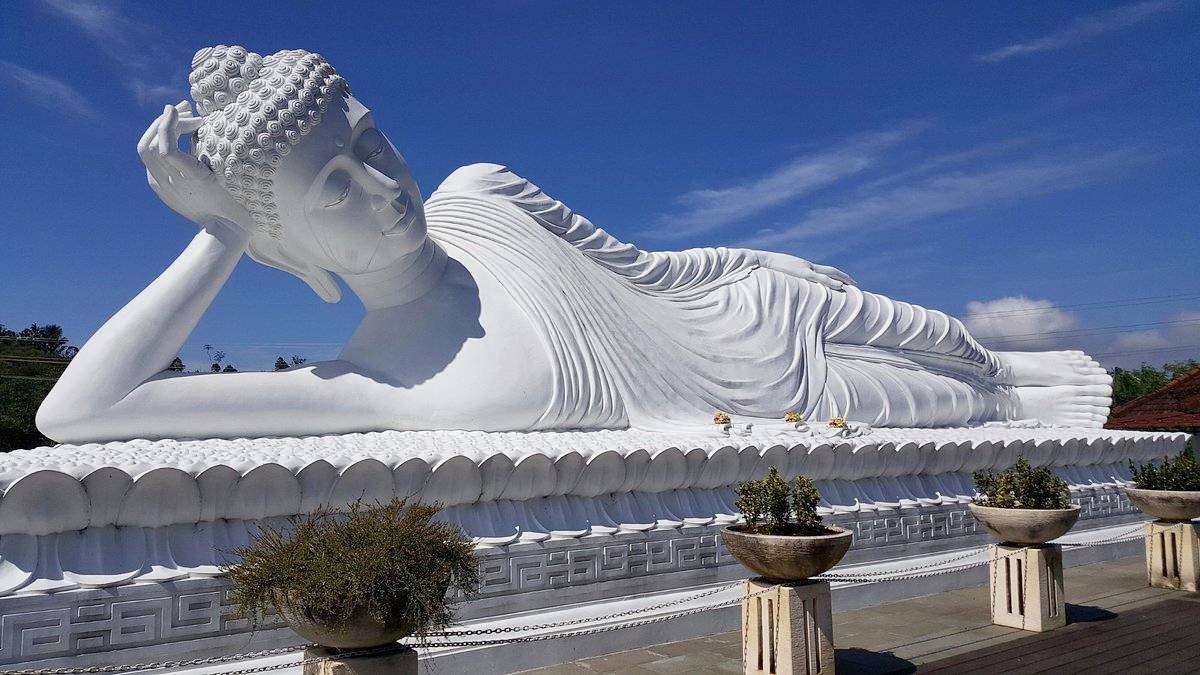
The beautiful Buddhist temple Vihara Dharma Giri is located in Pupuan, Tabanan, West Bali. The enormous, white sleeping Buddha statue at the temple is its most famous feature. In addition to providing a special opportunity for tourism, the temple has a serene and comfortingly quiet atmosphere. You are free to wander around its magnificent complex and discover zen. On the ground floor of the temple, there is a welcoming courtyard where you may relax and have some refreshments. The 10-meter-long sleeping Buddha is then visible after climbing a flight of stairs. A modest pavilion with a big bell may be found after climbing a few more stairs to the top level. The best temple in Bali is accessible to everyone, and there is no fee to enter. Nevertheless, you must give money when you enter as part of a donation.
Suggested Read: Best Places to Go in Bali
Seminyak (2N)
Kuta (1N)
- Private South Bali Trail-Nusa Dua Beach, GWK, Padang-padang Beach, Uluwatu
Pura Samuan Tiga
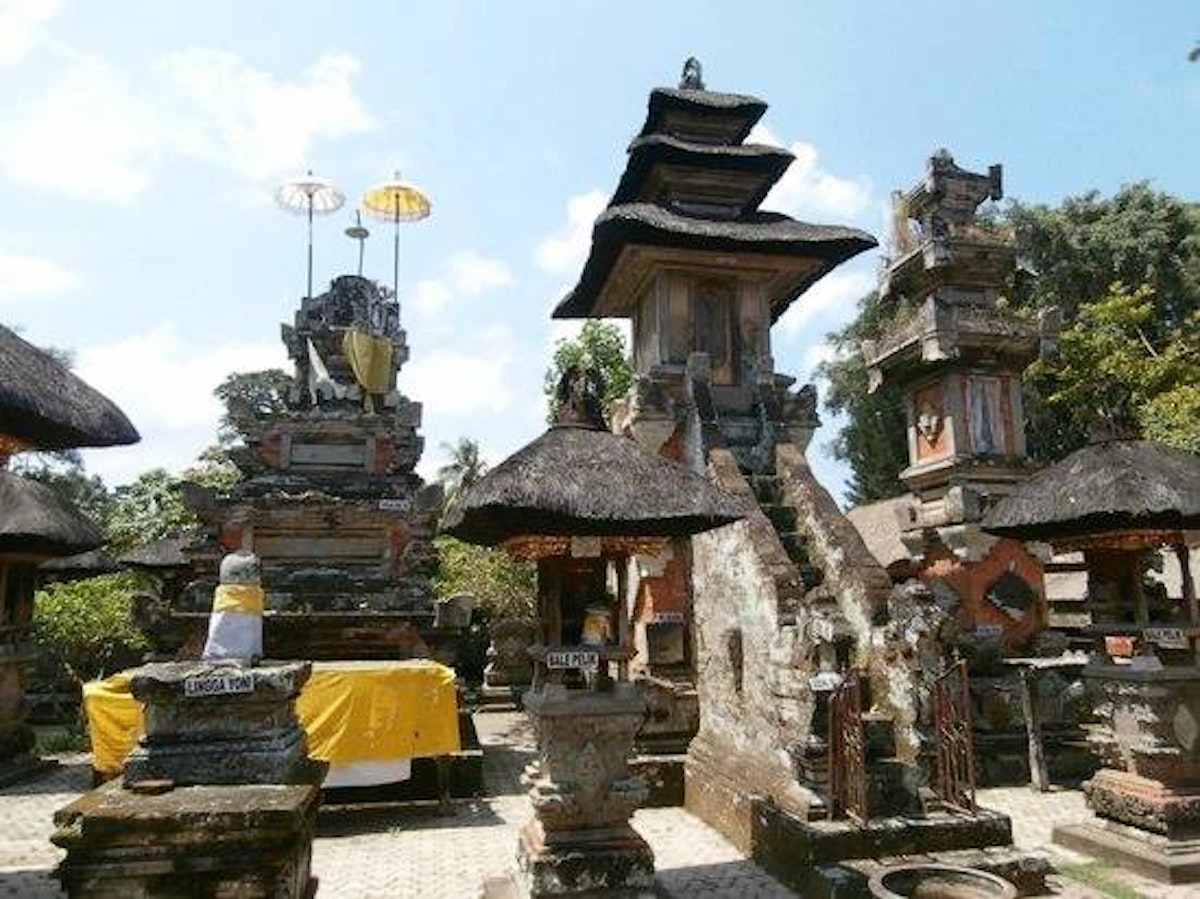
Located in the Gianyar village of Bedulu, the Pura Samuan Tiga dates back to the 10th century. It is around a 20-minute drive from central Ubud or 800 meters to the east of the Goa Gajah temple complex. The temple was constructed by the Warmadewa dynasty, which is also credited with creating the famous Tirta Empul Temple complex. With its elaborate sandstone carvings and imposing temple gates, the old temple is a fantastic location to view ancient Balinese temple architecture up close. Samuan Tiga contains seven courtyards instead of the typical three found in Balinese temples. Walls and split gates are used to divide them, and staircases are used to connect them. The name of the temple, Samuan Tiga, translates to "meeting of three," and it refers to the Hindu trinity of Lord Brahma, Lord Vishnu, and Lord Shiva, as well as the mountain, the land, and the sea. It is one of the best temples to visit in Bali.
Ubud (3N)
Kuta (2N)
- Guided Bali Tour: Ulun Danu Beratan Temple + Tanah Lot
Penataran Sasih Temple
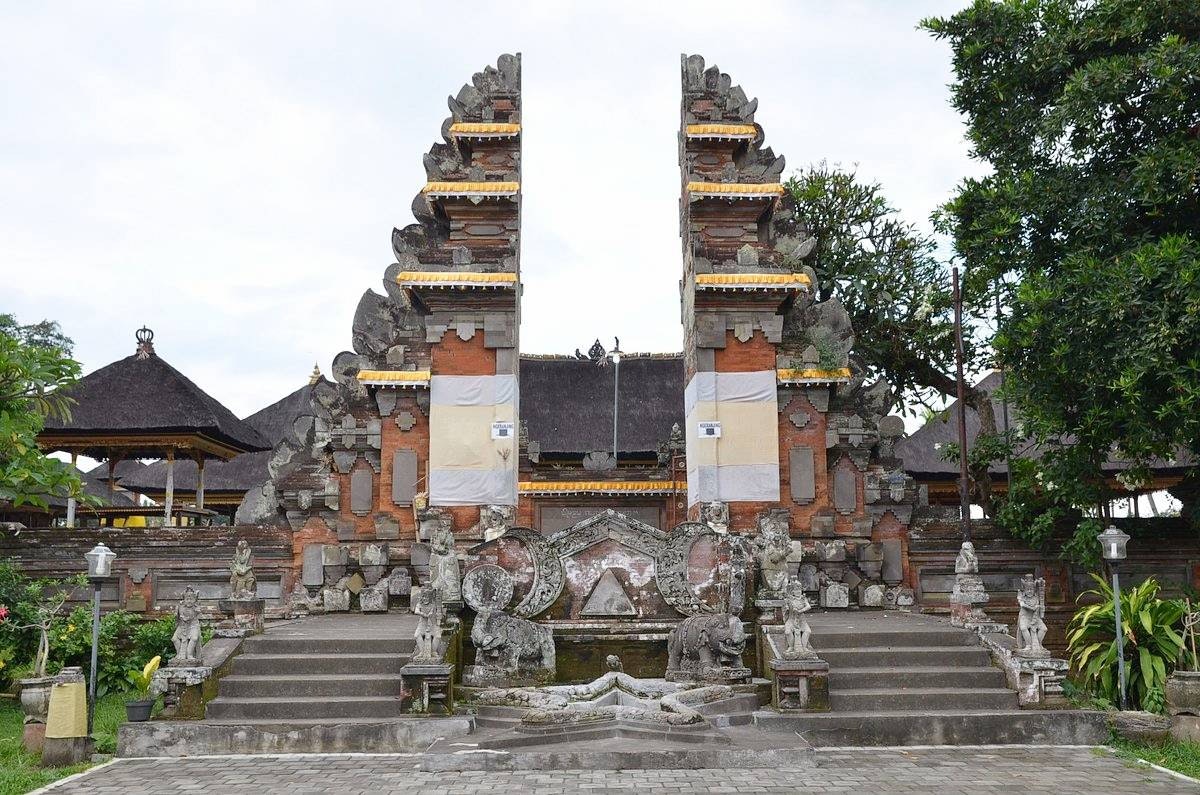
Penataran Sasih Temple is known as "the Moon Temple" because it houses the "Moon of Pejeng," an ancient bronze kettle drum. It is Southeast Asia's largest bronze kettle, measuring approximately 2 meters in length and dating back to 300 BC. The Hindu temple dates from 1266 AD and served as the Pejeng kingdom's state temple. Pura Penataran Sasih also has a stone Seat of Ganesh in the main courtyard, as well as a modern chronogram in front of the entrance and several Hindu sculptures. Pura Penataran Sasih is located about 6.5 kilometers east of Ubud and is one of the recommended temples to visit in Bali.
Kuta (3N)
Ubud (2N)
- Tanah Lot Sunset Tour with complimentary Photoshoot of 30 Minutes
Batuan Temple
A must visit temple in Bali is Batuan Temple which showcases an impressive fusion of Hindu and Buddhist architectural elements. Borne out of 9th-century Balinese culture, this sacred site boasts intricate stone carvings and a majestic three-tiered Meru tower. As one of the oldest temples on the island, Batuan Temple offers visitors a glimpse into Bali's rich historical past.
Beji Temple
Widely known as one of the famous temples in Bali, Beji Temple is dedicated to the goddess Dewi Sri – protector of rice fields and harvest – who plays an essential role in traditional Balinese culture. Nestled amidst lush greenery, this temple features intricate carvings covering every inch of its walls, making it an excellent example of ornate Balinese architecture. The temple also provides a peaceful environment for contemplation and spiritual reflection.
Kehen Temple
Kehen Temple, located in the Bangli area, is an ancient Hindu temple that dates back to the 11th century. This gem of a temple is known for its intricate stone carvings and lush green surroundings. Visitors marvel at the massive, eight-tiered Meru shrine dedicated to the god of fire, Brahma. When you visit Kehen Temple, you'll be surrounded by history and sacredness that makes it one of the best temples in Bali.
Sakenan Temple
Sakenan Temple, found on the serene Serangan Island, is a stunning Balinese Hindu temple that holds great historical and religious significance. Built by Mpu Kuturan in 1000 AD, this temple is often called the 'temple on water' because it becomes surrounded by sea during high tide. Head to Sakenan Temple for a unique experience that's both spiritual and picturesque – it's a must-visit temple in Bali.
Gunung Kawi

Pura Gunung Kawi is a unique and fascinating temple in Bali complex located in Sebatu region. The temple is dedicated to the Hindu god of death, Yama. The temple complex consists of a series of rock-cut shrines that are located in a lush rice paddy landscape. The shrines are dedicated to the deceased kings of Bali. Pura Gunung Kawi is a popular tourist destination and is a great place to learn about Balinese culture and history.
- Guided Temple Tour: Taman Ayun, Ulundanu, Handara Gate, Banyumala water fall and twin lake
Goa Giri Putri Temple
Located on Nusa Penida Island, Goa Giri Putri Temple is an extraordinary site that showcases how nature intertwines with faith. The temple is nestled inside a massive limestone cave where worshippers venture through narrow passages to reach its main worship area filled with shrines and prayer spots. With its awe-inspiring setting and atmosphere of reverence, Goa Giri Putri Temple has become one of the famous temples in Bali.
Also Read: The Best Vegetarian Restaurants in Bali
Batukaru Temple
Tucked away on the slopes of Mount Batukaru – one among Bali's sacred mountains – is the serene Batukaru Temple. Surrounded by dense forests, this Hindu pilgrimage site offers visitors an ethereal experience amid nature's bounty. Originally built during the 11th-century as a shrine to Mahadewa (the guardian of the mountain), Batukaru Temple has since seen several restoration efforts. When you visit this captivating sanctuary, you'll discover why it's considered one of the best temples of Bali.
Holy Water Sebatu Temple

The gorgeous and appealing Sebatu Temple, which exudes uniqueness, can become your spiritual tourism destination. As you enter the temple courtyard, you'll notice the stunning natural surroundings and the crystal-clear water, which create a wonderfully magnificent environment. As the story spreads through word of mouth, the Sebatu Temple is incredibly sacred and magical. The general public has been allowed access since it first started. Because the temple is placed directly on a river bank, visitors must descend some concrete stairs to access the temple. It is believed that holy water purifies the body and the spirit. Also, people believe that according to the karmic state of the person taking a shower, the water will change hues like red, dirty, yellow, and others. It is a unique temple to visit in Bali.
Sanur (2N)
Nusa Dua (2N)
+1 Cities
- Full Body Massage at a Balinese Spa
Pura Taman Saraswati
One of the best temples in Bali, Pura Taman Saraswati is situated in the heart of Ubud and dedicated to the Hindu goddess of knowledge, art, and wisdom – Saraswati. Surrounded by a stunning lotus pond, this temple showcases beautiful traditional Balinese architecture and holds regular performances of classic Balinese dances in the evenings.
Tirta Gangga Water Palace
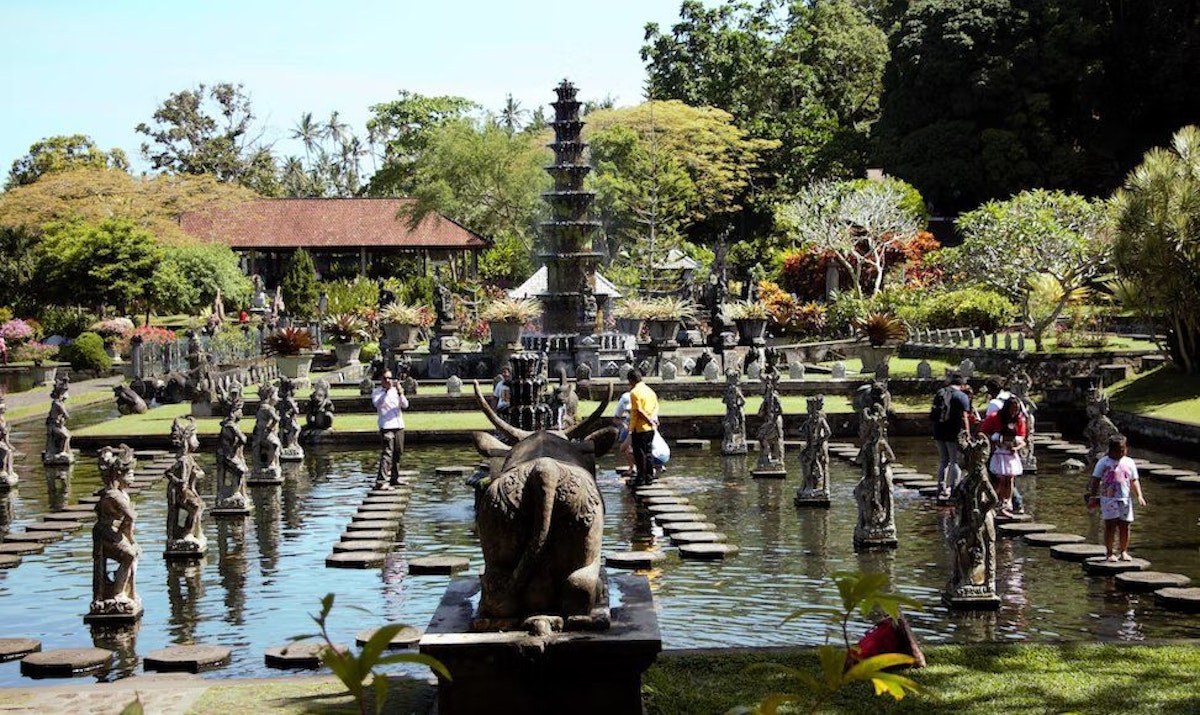
The late King of Karangsem built the former royal palace known as Tirta Ganga in 1946. It is well-known for its Patirthan temple, bathing ponds, and Karangasem royal water palace. Tirta Gangga is based on Balinese Hinduism, in which the Ganges River and its waters are worshipped. The Ganges River's waters are loved for their value in irrigation, agricultural richness, recreation, and economic activity. The Patirthan temple illustrates Tirta Gangga's historical importance to Balinese culture as a sacred water and pilgrimage place and is one of the best Bali temples.
Seminyak (3N)
Ubud (3N)
- Kintamani Volcano + Ubud art market + Coffee Plantation + Tegenungan water fall With Private Transfers
Lempuyang Temple
Lempuyang Temple, also known as Bali's best temple, is an awe-inspiring ancient complex perched high on Mount Lempuyang. With its picturesque "Gates of Heaven" – a pair of grand gates overlooking the summit of Mount Agung – it provides a mesmerizing backdrop for travellers to capture unforgettable photos. The temple is also one of Bali's holiest sites, attracting pilgrims throughout the year.
Petitenget Temple
Among the best temples of Bali rests Petitenget Temple, a significant cultural landmark located in the bustling neighbourhood of Seminyak. Though lesser-known compared to other temples on the island, Petitenget Temple retains its charm and authenticity with intricately carved stone walls and vibrant offerings, providing a serene and spiritual atmosphere amidst its urban surroundings.
Temples in Bali are archaeological marvels; you can relish the ancient architectural designs, and the sunset views from the temple are truly divine. However, keep in mind that wearing revealing clothing will prevent you from entering the temple, so dress modestly when going. You can wear sarongs, a Balinese dress that covers your legs below the knees. Apart from other sightseeing, there are a lot of temples to visit in Bali. You can book a Bali tour package with Pickyourtrail to have a delightful and divine vacation.
Explore More Articles on Bali
Check out our Best Selling Packages
Bali Temple Tour Packages | Bali Indonesia Honeymoon Package | Bali Family Packages from India
Discover Other Popular Temples of Bali
Masceti Temple | Pura Petitenget Temple | Sakenan Temple | Kehen Temple | Pentaran Agung Lempuyang | Pura Puseh | Pura Puncak Mundi | Tirta Empul Temple | Pura Agung Jagatnatha
Update your location?



